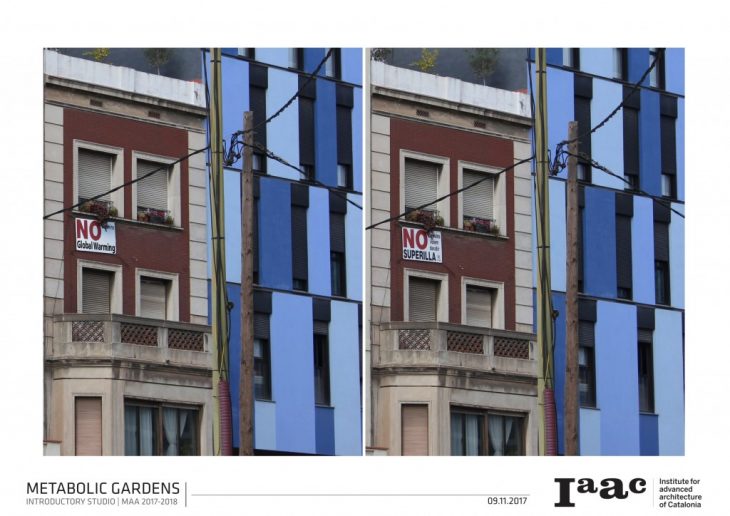
De-pollute is a project proposed at Superilla in Poblenou district. The aim of this project is to design a structure that creates a microclimate for social gathering. The structure is made of metal mesh that attracts the pollution using electrostatic fields. These meshes will be charged by the energy produced by wind. The idea here is to exhibit these dust particles and use it as a design strategy rather than hiding it. Thus, it also acts as an exhibition space to create awareness about the growing issues of pollution.
“A place to breathe and think about our transportation choices.”
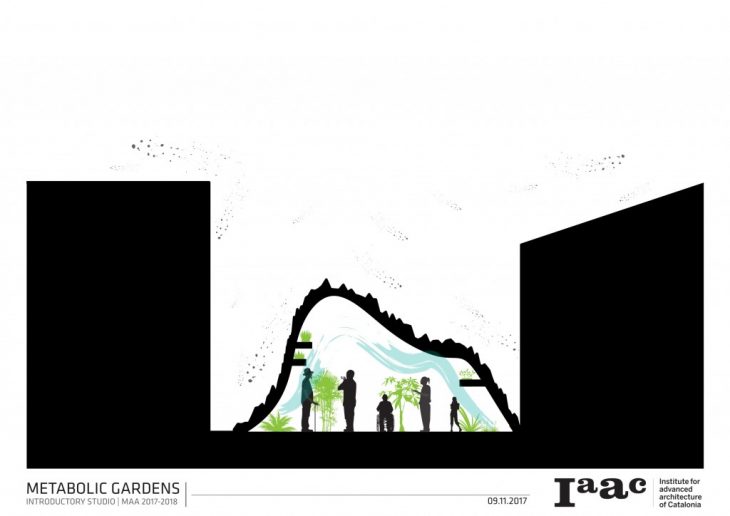
The following agents are involved in the project:-
- Primary: Wind, Pollution, Rain
- Secondary: People, Plant
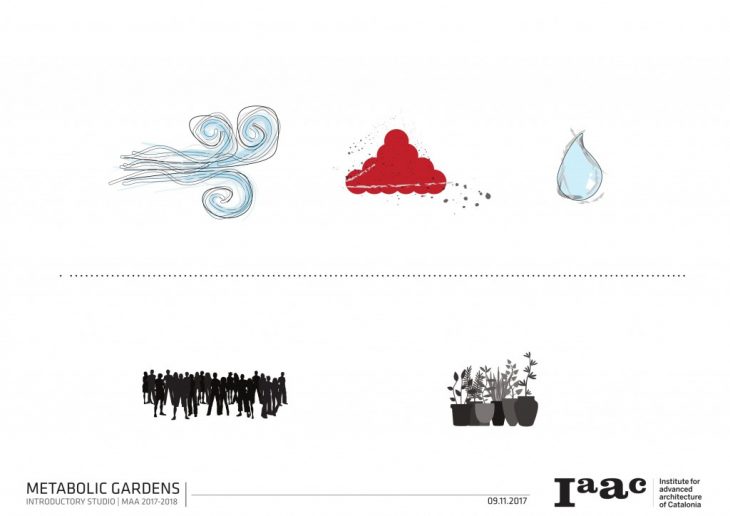
Agents Involved
The growing issues of pollution and global warming have been talked about on various levels but its impact has not yet been felt by a large percentage of the population especially in the aspects of daily routine and habits. This project has been designed not only to reduce the CO2 footprint and also to create this awareness about the issue of global warming by creating an interactive public space with a metabolic cycle that responds to the pollution. The spaces will be designed with a special focus to elderly and people with diseases as well as also to as an exhibit.
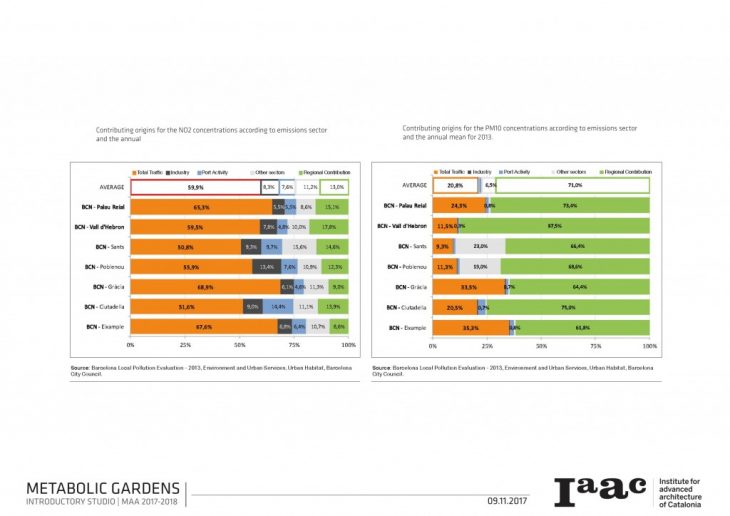
Plan to improve air quality in Barcelona 2015-2018 (PMQAB), Barcelona City Council
Three spots in the Superilla are proposed for this intervention. The 3 locations have been selected on the basis of traffic and pedestrian movement. All these locations even after having large footprints are not activated for public interaction.
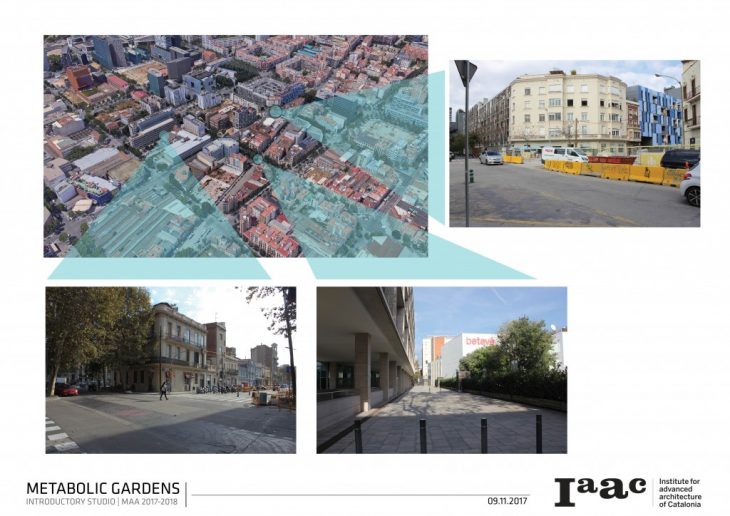
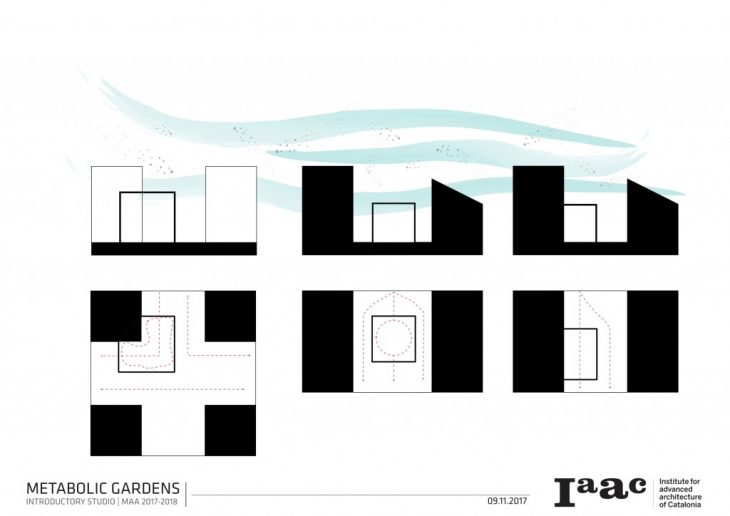
Location and Street intersection Analysis
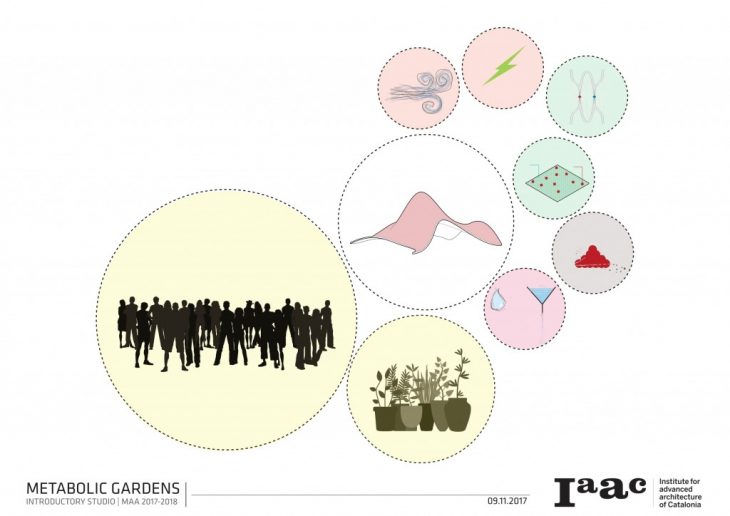
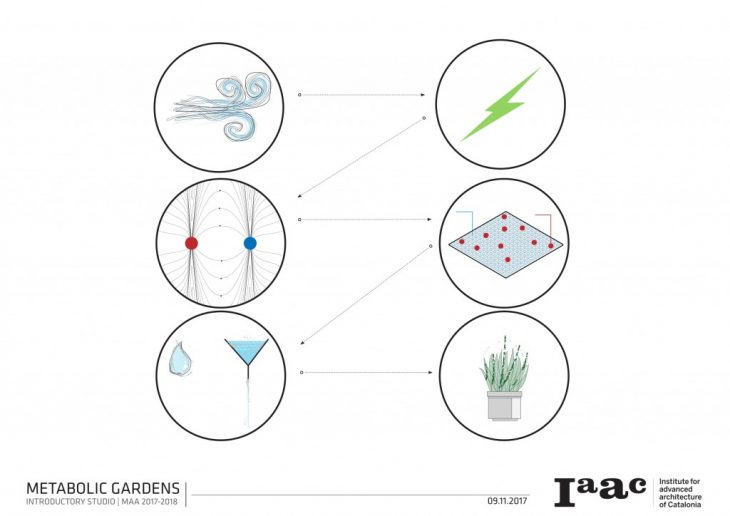
Metabolic Cycle
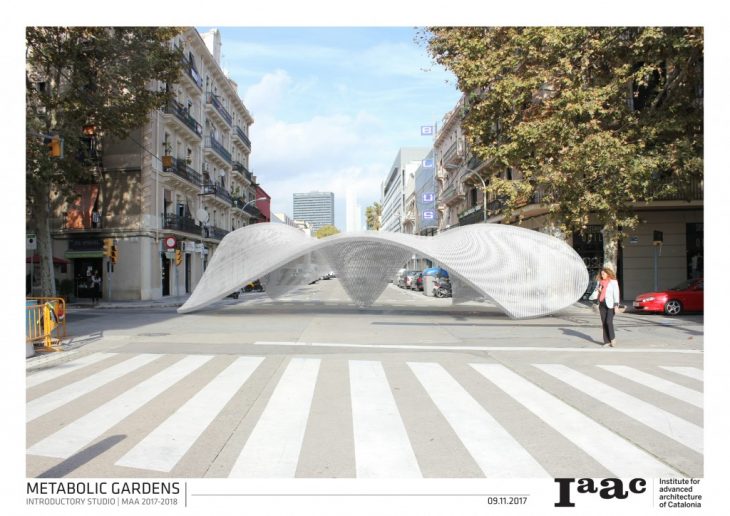
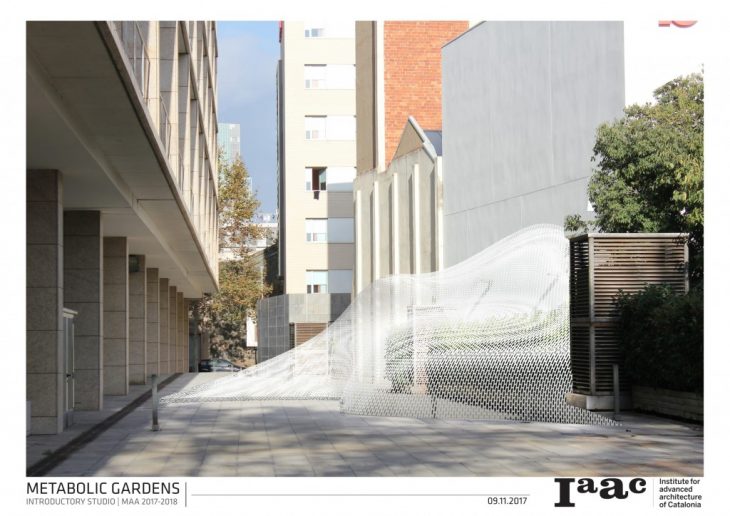
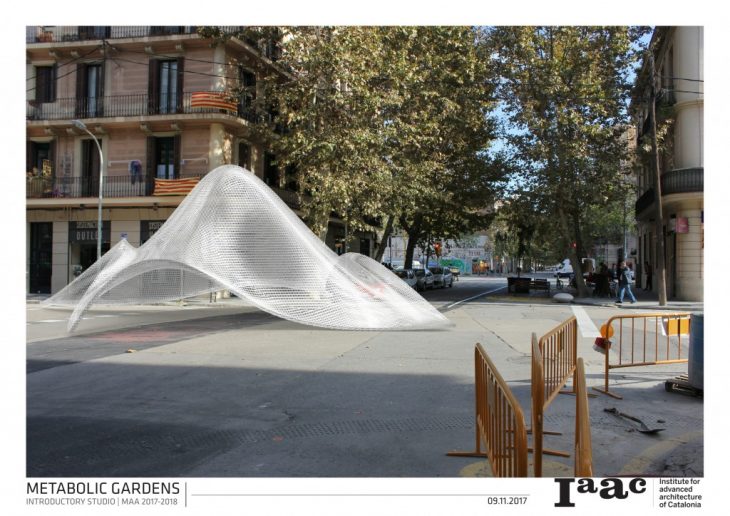
Structure and design Concept
Prototype Development
Week 01 :
In the 1st week, we came up with an idea of creating an articulated canopy. For this, we worked on 2 basic principles to develop our prototype. The first step involved using the favorable wind flow at the site to create vibrations in the prototype that would trigger a linear electromagnetic accelerator to produce energy. The second approach involved capturing the pollution particles in the air using an absorbent material in the device and converting it to usable energy. The energy produced from both the sources would then be used to light the street lamps and at charging stations.
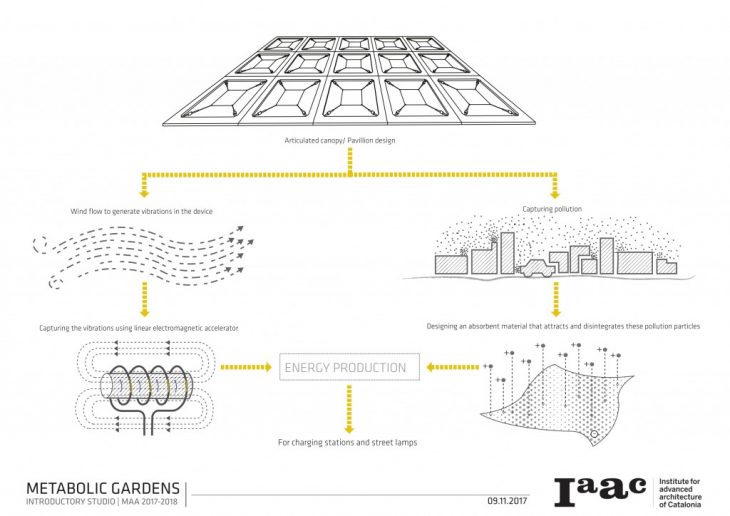
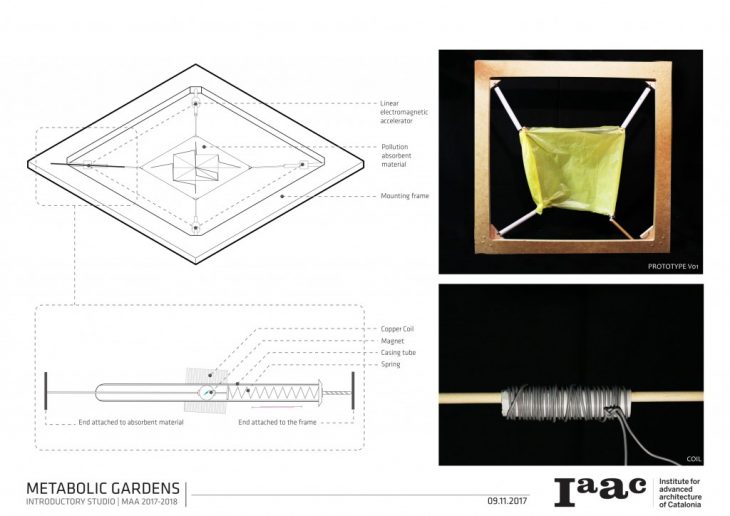
Week 02 :
After the experiments with the prototype in the 1st week, we realized that the energy produced by the techniques wouldn’t be a viable source to be used for street lamps and charging stations. But instead, this energy could be fed to a fabric mesh to create an electrostatic field that would attract pollutant particles. Therefore, the 2nd week focused on exploring the attraction and static properties of this fabric mesh. Two layers of oppositely charged fabric were placed at a distance to create the static field. Meanwhile, various components for the accelerator were fabricated to bring together the prototype.

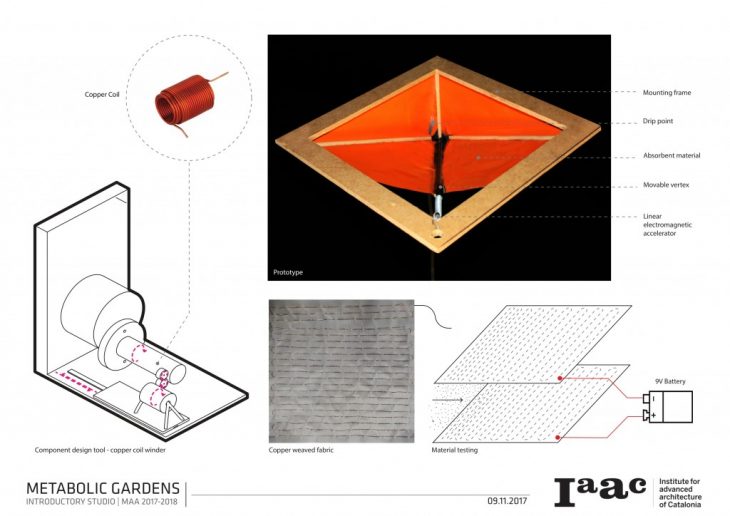
Week 03 :
In the 3rd week of prototype development, we focused on experimenting with the various components of our device. This consisted of following 2 types of experiments:-
- Fabric study
6 different types of fabric were tested for attraction properties with 6 types of dust particles.We created a device by placing 2 sheets of aluminum foil against each other. When charged with batteries, these foils created an electrostatic field in the area surrounded by the foils. The dust particles were then blown through this field which ionized them. The 6 different types of clothes were placed at the end of the device in the direction of wind flow. The attraction properties of the charged dust to the different fabric were noted and compared.
- Piezoelectric generator
Instead of using the electromagnetic accelerator, we experimented with piezoelectric plates since that would respond better to vibrations.
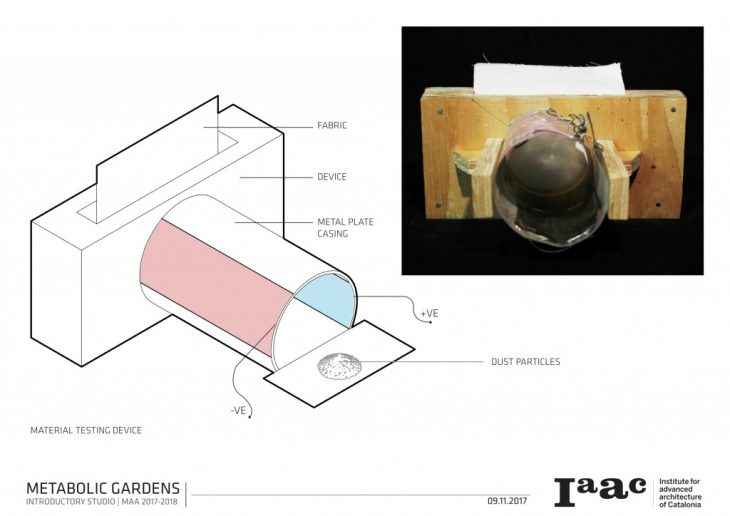
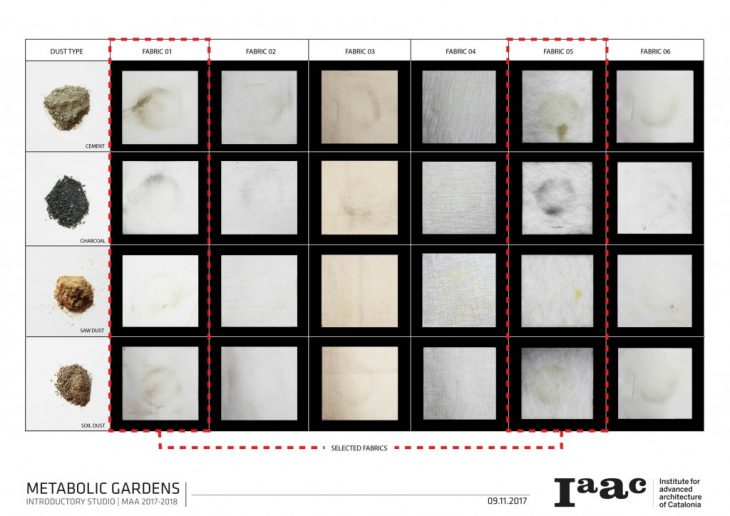
De-pollute is a project of IaaC, Institute for Advanced Architecture of Catalonia
developed at MAA01 in 2017 by:
Student: Arman Najari, Kavya Jose, Mohamed Ifthikar
Faculty: Javier Peña , Oriol Carrasco